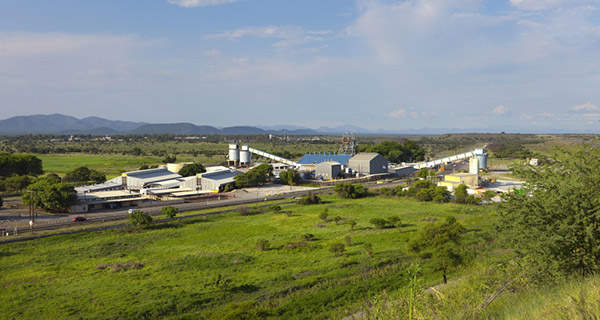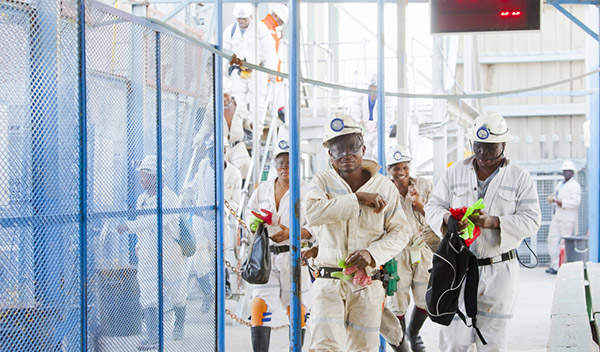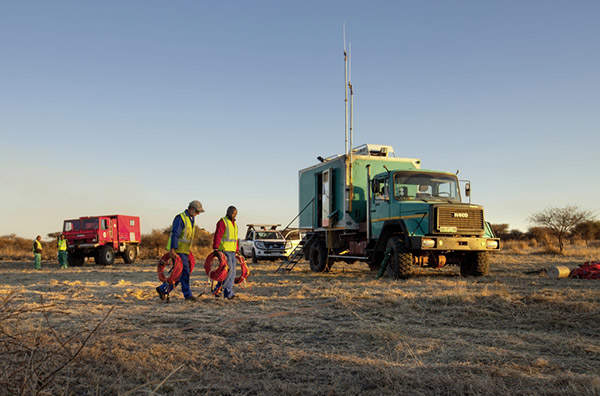
Union Mine is located in the Rustenburg district, 15km west of the Northam town in the Limpopo and North West provinces of South Africa. The mine contains platinum group metals (PMG).
The mine operates under a mining right, covering a total of 119km2 in the north-western section of the Bushveld Igneous Complex (BIC), which is proven as the richest source of PMG. The life of the Union mine extends to 2028.
The mine is 85% owned by the world’s largest platinum producer Anglo American Platinum, a subsidiary of London-based miner Anglo American. The remaining 15% is owned by the Bakgatla-Ba-Kgafela traditional community, which comprises around 47% of the mine’s labour force.
In 2011, Union Mine was reorganised to have two separate entities, namely Union North and Union South, for better management and operational efficiency.
Union Mine’s platinum group mineral reserves
Platinum, palladium, rhodium and gold (4E) are the major Platinum Group Minerals (PGMs) produced at Union Mine. As of 2012, the 4E ore reserves of the mine are reported to be 8.5 million ounces.
Union Mine infrastructure
Union Mine consists of three vertical shafts and three decline systems, known as 4B, 4 South and 3 South. The vertical shafts are the Richard Shaft (North Mine), the Spud Shaft (South Mine) and the Ivan Shaft.
About 15% of the extraction at the decline complexes goes to Union North, while the remaining 85% goes to Union South. The mine is being operated at a depth ranging between 150m and 1,500m beneath the surface.
Geology and ore details of the Bushveld Complex
Union Mine is located in the north-western limb of the BIC, which was formed about 2,000 million years ago. BIC is considered to be the world’s largest mafic-ultramafic layered intrusion with an underlying area of 66,000km².
The BIC contains concentrations of platinum group metals mainly in two reefs – Merensky Reef and Upper Group 2 (UG2) Reef. The PGM reserves in the two reefs are estimated to be 547 million ounces and one billion ounces respectively.
The Merensky Reef has been extracted since 1925, while the exploitation of UG2 began in the 1970s. The UG2 ore is richer in chromite but contains lesser nickel and copper sulphides compared to Merensky ore.
The Union Mine project lays more emphasis on the extraction of the UG2 Reef ore because it has a higher density and its ore is relatively more friable, which reduces its treatment cost significantly compared with Merensky’s ore.
Mining and processing of ore at the Union Mine
Union Mine uses underground mining method. Two-thirds of underground mining is done through conventional breast stoping method with strike pillars, while hybrid mining is carried out at the declines.
Related project
Marikana Platinum Mine, Rustenburg, South Africa
Marikana is located near Rustenburg, about 112km from Johannesburg in South Africa.
The ore is drilled with low-profile drilling equipments and subsequently cleaned from the stopes with the use of low-profile load-haul-dump (LHD) vehicles.
The extracted ore undergoes comminution with the use of a double roll crusher, followed by the process of gravity concentration. Subsequently, the sulphide concentrates are separated through floatation. The concentrate then undergoes the processes of smelting and converting to produce the PGM-containing matte. Next, the matte is treated to separate the base metals from PGMs. Finally, the PGM concentrate is refined to produce pure individual metals.
The ore is smelted at Anglo Platinum’s Mortimer Smelter located near the mine, while converting is done at the Waterval Smelter located in Rustenburg.
Production at Union Mine
During 2010-2011, Union Mine produced 254,000 ounces of platinum (91,500 ounces from the North Mine and 162,700 ounces from the South Mine), a 13% decline from the preceding year.
The decline in production was attributed to multiple causes, including safety stoppages, depletion of Merensky and low-grade ore sources, and operational challenges at the declines.
Production at the mine also suffered a setback in 2012 because of strikes and labour disputes. However, in a positive development, an agreement accorded in November for a new deal with the workers has brought the mine’s operation back to normal.
The future of Union Mine project
Union Mine’s decline projects (the 4 South Phase 4, 5 South Upper UG2, and 5S lower UG2), under implementation aim to extend the existing 4B, 4 South and 3 South decline systems.
A concept study of the Union Deeps project is also underway. Union Deeps is a major project targeting the Merensky and the UG2 Reef horizons below the existing infrastructure. A 3D seismic survey of the targeted area was completed in 2011.










